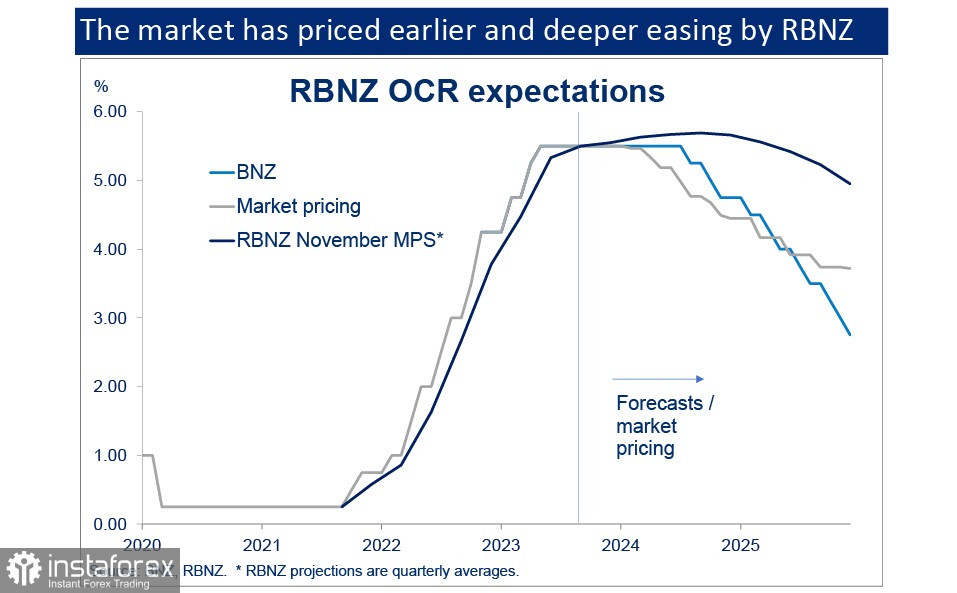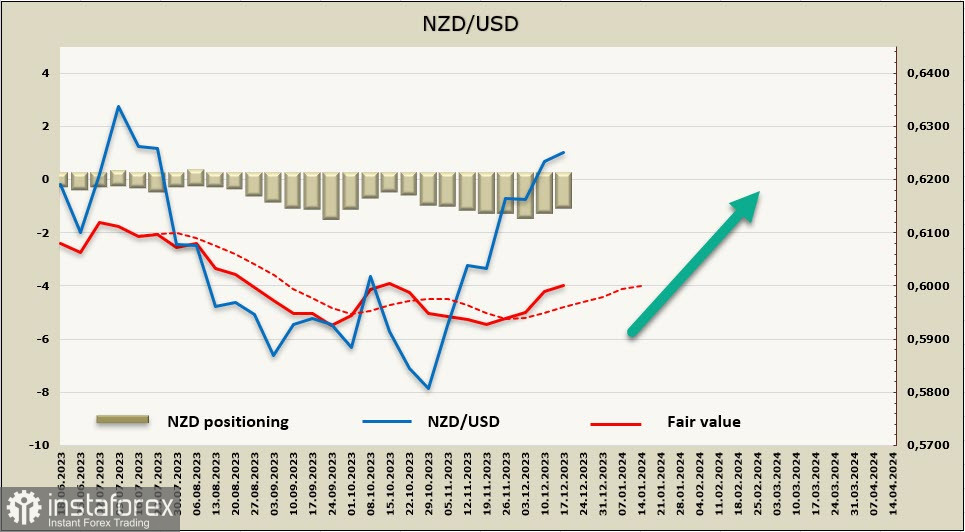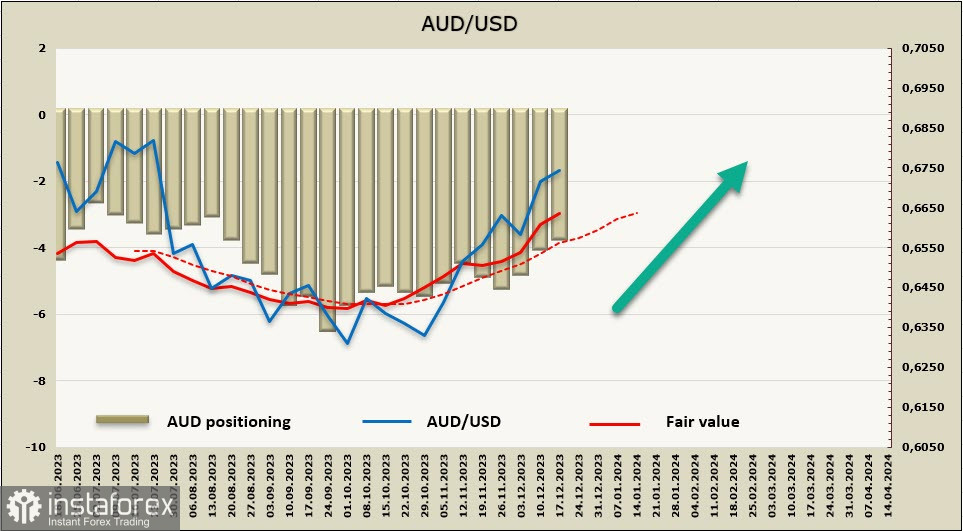Federal Reserve officials made efforts to ease market pressure following the unexpectedly dovish outcome of last week's Fed meeting. John Williams, the head of the New York Fed, was the first to comment on the trajectory of interest rate expectations. He cautioned against placing too much reliance on market expectations. Loretta Meister, the head of the Cleveland Fed, added on Monday that the market had gotten a bit ahead in terms of its expectations. James Gulsby from the Chicago Fed even expressed confusion about how the market reacted to the Fed's policy update.
In any case, the direction of interest rates will depend on the incoming data flow. The dollar saw a slight uptick after these comments, but it remains under pressure.
Oil is rebounding from recent lows and has reached a two-week high. This could be seen as a positive sign for the global demand situation. However, it may also be indicative of increased risks associated with oil transportation through the Red Sea, which is becoming more perilous. If the rise in oil prices is due to the latter factor rather than the former, it is unlikely to provide additional support to commodity currencies.
Nevertheless, there are still no indications of a shift in expectations for the dollar to move in a bullish direction.
NZD/USD
New Zealand's economy contracted by 0.3% quarter-on-quarter in the third quarter. GDP per capita declined by 3.0% over the past year, with the overall GDP decreasing by 0.6%. This difference is due to the rapid population growth driven by very high migration rates into the country.
The yield on New Zealand's 10-year bonds dropped to its lowest level since July, driven by both the outcomes of the Fed's meeting, which led to a decrease in global yields, and internal factors.
GDP data for the third quarter showed a 0.3% contraction, with the GDP outcome coming in 1.8% below the Reserve Bank of New Zealand's forecast. Markets are anticipating the first rate cut in May, and by 2024, a reduction of nearly 100 basis points is expected. These rate cut expectations are higher than those in Australia and closely align with the expected trajectory of the Fed's rates.

As seen from the chart, these three forecasts from the Reserve Bank of New Zealand (RBNZ), BNZ bank, and market forecasts significantly diverge from each other and only roughly align in the near term. The RBNZ forecast provides grounds to expect a continuation of the bullish scenario, while the market forecast, if realized, could lead to a sharp downturn in NZDUSD.
The bullish momentum for NZD may end earlier than for the Australian dollar, but this is still a distant prospect and not of decisive importance for the exchange rate.
The net short position on NZD has decreased by 181 million to -827 million, indicating a moderately bearish positioning. The calculated price is above the long-term average and is confidently trending upward.

NZD/USD has broken through the upper channel boundary and is currently attempting to build on this success. The target is the local peak at 0.6409, and a sustained move above this level would signify the end of the bearish scenario, with attempts to breach 0.6533 afterward. The likelihood of a downward movement is considered low, with support at 0.6215/25.
AUD/USD
The minutes of the RBA meeting held on December 5, published this morning, confirmed the key assumptions that guided the Committee, leaving the interest rate unchanged. The domestic economic situation is predictable and not a cause for concern: inflation is slowing down gradually, the labor market is cooling off, and GDP growth is moderate. Overall, there are no signs of worry or the need for any urgent measures, except for the wage situation - quarterly growth rates are the highest since the late 1990s when data collection began. By the end of the year, these rates will reach 4%, which doesn't bode well for a quick slowdown in inflation.
Regarding external factors, there has been growth in China, which has improved the situation with coal and iron ore shipments.
The rate forecast remains the same - another increase in February to 4.6% and maintaining it at this level until the end of 2024. If this forecast holds true, the Aussie will have an advantage over the dollar in terms of yield, which fuels bullish expectations. In support of this scenario are inflation forecasts - ANB bank expects average inflation to be around 4.5% by the end of 2023, decreasing to 3.25% by the end of 2024, which is higher than in the United States.

The net short position on AUD decreased by 346 million over the reporting week to -3.433 billion. The positioning remains bearish, but over the last 11 weeks, there has been a clear trend favoring an increase in long positions. The calculated price is above the long-term average and continues to show an upward trajectory.
The Aussie is breaking out of the bearish channel to the upside, and the momentum appears convincing, with a high probability of further growth. The support at 0.6710/30 has transformed into resistance, and a drop below this level is unlikely. The target is 0.6890/6905.
 English
English 
 Русский
Русский Bahasa Indonesia
Bahasa Indonesia Bahasa Malay
Bahasa Malay ไทย
ไทย Español
Español Deutsch
Deutsch Български
Български Français
Français Tiếng Việt
Tiếng Việt 中文
中文 বাংলা
বাংলা हिन्दी
हिन्दी Čeština
Čeština Українська
Українська Română
Română

